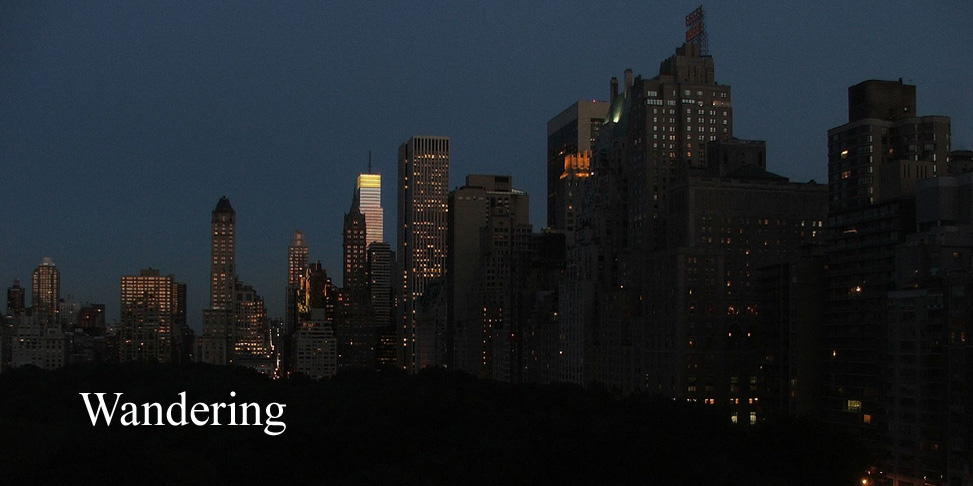If there is anything better than an exciting performance by a great string quartet it’s hearing them play from about five feet away. I had this wonderful opportunity at the concert given by the JACK Quartet - Ari Streisfeld and Christopher Otto, violins, John Pickford Richards, viola, and Kevin McFarland, cello, in the Greene Space at WQXR Thursday night.
Without the internet, which shows its value in all kinds of ways, it is unlikely that I would have heard of either the JACK Quartet or the Greene Space.
I only found out why the quartet is named JACK at the concert; but it is obvious enough and spelled out on the group’s website. JACK is an acronym made up from the players’ names: John, Ari, Chris and Kevin. The history of the name is more complicated. The players met and first played together as students at Eastman School of Music. Before they constituted themselves as JACK, they played a string quartet by Helmut Lachenmann: Grido, (scream in Italian), which is also an acronym for the then members of the Arditti Quartet, (including Australian violinist Graeme Jennings) for whom it was written. So they took the JACK acronym as their name.
The concert was presented by Bill McGlaughlin of WQXR who managed to be both unobtrusive and very knowledgeable in his explanations. Various radio announcers and lecturers I can think of would benefit from listening carefully to his work.
The first piece was Death Valley Junction by Missy Mazzoli, who was present and introduced the work, which is descriptive of a location of that name which Ms. Mazzoli happened upon during a car journey. The settlement comprised a restaurant, hotel and unexpectedly a theatre, Amargosa Opera House, where Marta Becket (b.1924), a dancer, performed ballet and mime. Death Valley Junction is an imaginative piece in the tradition of descriptive works like Small Town and Knoxville: Summer of 1915. It includes a passage inspired by the dancing of Marta Becket and ends with a memorable solo passage for the cello.
Mr. McGlaughlin asked the quartet to play the last 90 seconds of the work a second time. He mentioned that the conductor Lukas Foss often played new music twice when introducing it at a concert. I wish more performers would do this. Musicians who learn and play new music have a huge advantage over their audience. I often get no idea what a new work is about on one hearing and then it is gone forever. Sometimes, but not always, it’s possible to find a recording of the music but often there is none. The music must make some kind of impression to motivate the search – and, as with the piece by Xenakis which concluded this concert recordings can sometimes convey only a little of what is heard in performance.
Next, the quartet played violinist Ari Streisfeld's arrangements of three motets by Carlo Gesualdo (1566–1613). Mr. McGlaughlin read the words for which the pieces were originally a setting before each was played, and at the conclusion asked the players to demonstrate some features of the arrangements which he said might be better described as orchestrations. There seems to be a new interest adaptations and arrangements of early music by contemporary composers, which brings welcome new light to the pre classical period. But Mr. McGlaughlin mentioned with approval a remark by Neville Marriner, assigning original instrument movement to a “brown sandals and granola” set. How any body who has heard the tone and colour of a good performances on original instruments could say this is beyond me.
The great highlight of the concert was the last work performed Tetras by Iannis Xenaxis (1922-2001). Thanks to the innovative programming of Roger Benedict, director of the Sydney Symphony’s fellowship program, I was not completely ignorant of Xenaxis’ music. Composers have now escaped the clutches of the serialist police and we can listen to a great variety of interesting and involving new music. However, having learned that Xenakis used mathematical models including stochastic processes and other incomprehensible techniques in his work, I can’t help approaching him with fear and trepidation.
But this was swept away by hearing Tetras played with overwhelming energy and precision. Emerson like, Christopher Otto had replace Ari Streisfeld as first violin. The players almost shredded their bows, which were dripping with strands of hair at the end. No recording or hi fi system could reproduce the effect or of hearing this music seated five feet away from these outstanding musicians.
At the time of writing, this concert was available on streaming video at the WQXR website.
JACK quartet at The Greene Space WQXR, 7 April 2011.
Tweet


No comments:
Post a Comment